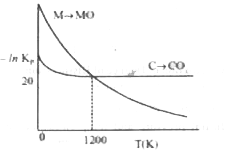At the sublimation temperature, for the process CO2(S)→CO2(g)
A
ΔH, ΔS and ΔG will be negative
B
ΔH>0, ΔS>0 and ΔG<0
C
ΔH<0, ΔS>0 and ΔG<0
D
ΔH>0, ΔS>0 and ΔG>0
Video Solution
Text Solution
The correct Answer is:D
Process being in equilibrium, ΔG=0. It possible only when ΔH and TΔS are equal and oppose each other. Thus, we should have either ΔH and ΔS both +ve or both −ve.
|
Updated on:21/07/2023
Topper's Solved these Questions
Similar Questions
Knowledge Check
- Question 1 - Select One
For the process CO2(s)→CO2(g)
ABoth ΔH and ΔS are positiveBΔH is negative and ΔS is positiveCΔH is positive and ΔS is negativeDBoth ΔH and ΔS are negative - Question 2 - Select One
At the sublimation temperature, for the process CO2(S)→CO2(g)
AΔH,ΔSandΔG are all positiveBΔH>0,ΔS>0andΔG<0CΔH<0,ΔS>0andΔG<0DΔH>0,ΔS>0andΔG=0 - Question 3 - Select One
At the sublimation temperature, for the process CO2(S)→CO2(g)
AΔH,ΔS andΔG are all positiveBΔH>0,ΔS>0 and ΔG<0CΔH<0,ΔS>0 and ΔG<0DΔH>0,ΔS>0 andΔG=0
For the process CO2(s)→CO2(g)
View SolutionFor the process
Dry ice→CO2(g)View SolutionFor the process
Dry ice→CO2(g)View SolutionEquilibrium constant for the following reactions have been determined at 823K.
CaO(s)+H2(g)⇔CO(s)+H2O(g)K1=60
CaO(s)+CO(g)⇔CO(S)+CO2(g)K2=400
Using this information, calculate, equilibrium constant (at the same temperature) for :− CO2(g)+H2(g)⇔CO(s)+H2O(g)K3=?
CO(g)+H2O(g)⇔CO2(g)+H2(g)K4=?View SolutionThe plot shows the variation of −InKp versus temperature for the two reactions.
M(s)+12O2(g)→MO(s)andC(s)+12O2(g)→CO(s)

Identify the correct statement :View Solution

